BETHANY BEACH, Del. — Highly specialized American Army units from the U.S. Department of Defense’s premier all hazards command trained for interagency nuclear forensics missions during Exercise Prominent Hunt at Bethany Beach, Delaware, April 4-7.
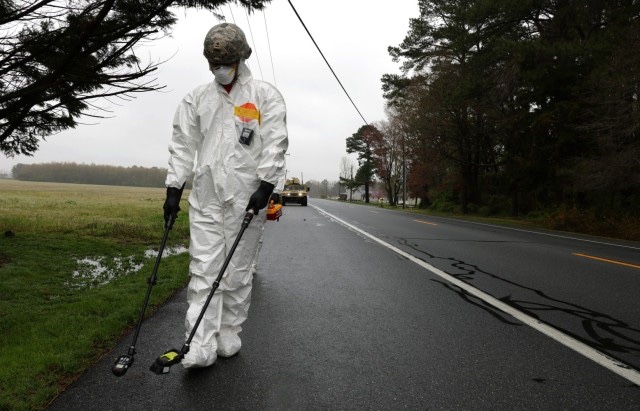
The 20th Chemical, Biological, Radiological, Nuclear, Explosives Command’s Nuclear Disablement Team 2 and 3rd CBRNE Response Team qualified to serve as a part of the National Technical Nuclear Forensics Ground Collection Task Force at the conclusion of Prominent Hunt.
NTNF members who have recently served on prepare-to-deploy orders for the task force — including members of NDT 3, 2nd CRT from the 46th Chemical Company, Army Public Health Center and AFTAC — served as observers and controllers during the exercise.
Soldiers from the Joint Base Lewis-McChord, Washington-based 3rd CBRNE Response Team, 9th Chemical Company, trained for their NTNF mission of collecting ground samples through crawl, walk and run phases.
“Prominent Hunt promotes tactical and operational readiness to react in a nuclear emergency to meet the Army’s current demands,” said 1st Lt. Samantha K. Roberson, the team leader for CRT 3. “This mission specifically gives our Soldiers a further understanding on the radiation and nuclear portion of our mission-essential tasks. These lessons they can internalize and apply to future missions and carry on to their future Soldiers.”
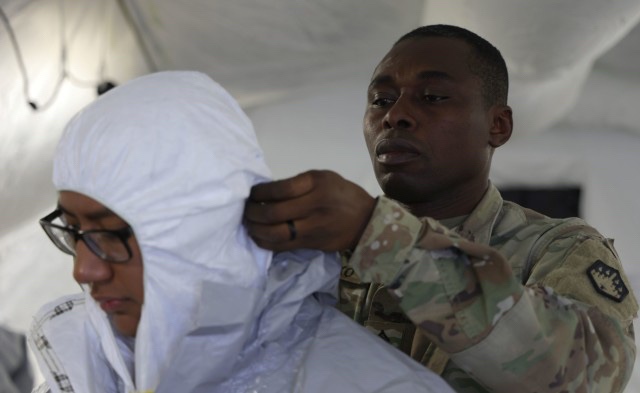
According to Roberson, CRTs have to stay ready for all four weapons of mass destruction threats: chemical, biological, radiological and nuclear.
“This task force gives us a rare opportunity to exercise our radiological and nuclear capabilities. In this particular mission, we stress our ground sampling and escort tasks alongside the FBI and Department of Energy to create a joint task force,” said Roberson.
A former enlisted Soldier from Baton Rouge, Louisiana, Roberson was commissioned into the U.S. Army Chemical Corps in August 2019 after earning a bachelor’s degree in Environmental Science and Toxicity from the University of Louisiana at Lafayette, Louisiana.
“I felt drawn to the Chemical Corps as it naturally pairs with my degree,” said Roberson. “The Chemical Corps has provided me with the opportunity to learn more of what I’m passionate about, while protecting my fellow Soldiers from any CBRN threats.”
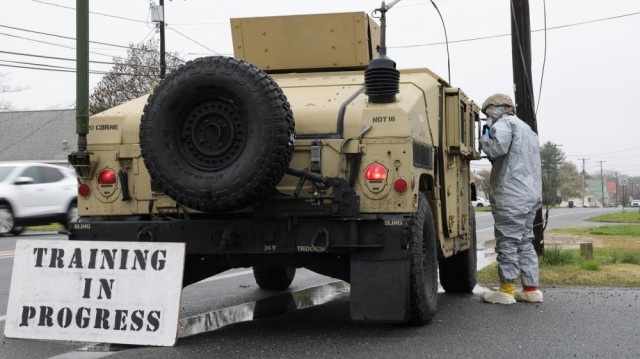
NDTs directly contribute to the nation’s strategic deterrence by staying ready to exploit and disable nuclear and radiological WMD infrastructure and components to deny near-term capability to adversaries. They also facilitate follow-on WMD elimination operations.
As the U.S. Department of Defense’s nuclear subject matter experts, Nuclear Disablement Teams serve as an informed interface between the CBRNE Response Team and the Department of Energy technical experts. The U.S. Army’s three Nuclear Disablement Teams — NDT 1 “Manhattan,” NDT 2 “Iron Maiden” and NDT 3 “Vandals” — are all stationed on Aberdeen Proving Ground, Maryland.
Maj. Stacey M. Yarborough, the deputy team leader for the Nuclear Disablement 3, served as an observer during the exercise.
“The NDTs are the DoD component lead,” said Yarborough. “We exercise mission command over elements from a CBRNE Reconnaissance Team, the Air Force Technical Applications Center and augmentations from the 20th CBRNE Headquarters.”
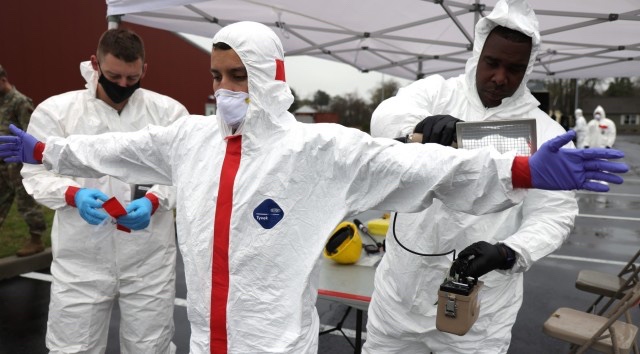
Yarborough said NDTs plan and battle track ground collection missions through a variety of Department of Defense communication systems.
“Our Medical Science Officer and Health Physics Technician noncommissioned officers monitor all members of the ground collection team for radiation exposure forward of the DoE hotline,” said Yarborough, a Nuclear and Countering Weapons of Mass Destruction officer from Felton, Delaware.
Lt. Col. Ronald C. Lenker, the team leader for NDT 2, served as the task force leader during exercise, a role usually reserved for an FBI Special Agent.
“The Ground Collection Task Force is led by the FBI as the task force leader and the Department of Energy also provides a deputy task force leader,” said Lenker. “In this particular scenario, no FBI agent was available, so I’m the acting task force leader for this exercise.”
An 18-year Army veteran from Wiconisco, Pennsylvania, who has deployed to Kuwait and Iraq, Lenker has participated in Exercise Prominent Hunt six times, including three exercises as a player and three as an observer and controller.
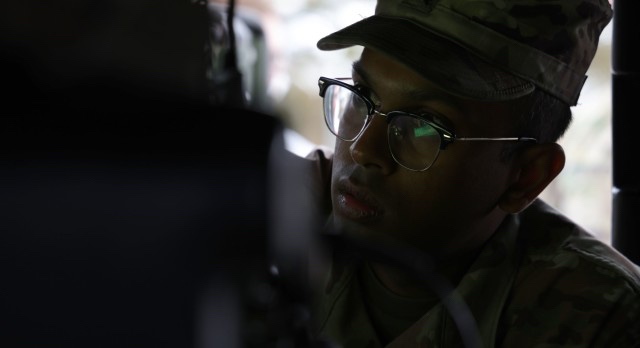
“Prominent Hunt is extremely important to the NTNF GCTF,” said Lenker. “This exercise demonstrates several agencies from the federal government can come together, swiftly form a cohesive task force and accomplish the mission In this case, attribution for the detonation of a terrorist initiated improvised nuclear device.”
Lenker said the task force came together to navigate around obstacles during the exercise. When one system went down, the operations team used a joint mapping tool in Humvee to track the plume of a simulated detonation.
“The highlight for me is seeing my Soldier and Airman teammates overcoming challenges as they arise,” said Lenker. “It’s this type of problem solving skills that set our military personnel apart from any other military in the world in my opinion.”
Story by Walter Ham
Photos by Marshall R Mason
??????????
As a part of an interagency task force lead by the FBI, the National Technical Nuclear Forensics Ground Collection Task Force gathers and packages samples of radioactive fallout that enable partner agencies to determine the source.
Headquartered on Aberdeen Proving Ground, Maryland, the 20th CBRNE Command is home to 75 percent of the U.S. Army’s active-duty explosive ordnance disposal technicians and chemical, biological, radiological, nuclear specialists, as well as the 1st Area Medical Laboratory, CBRNE Analytical and Remediation Activity, five Weapons of Mass Destruction Coordination Teams and three Nuclear Disablement Teams.
From 19 bases in 16 states, Soldiers and civilians from the 20th CBRNE Command deploy to confront and defeat the world’s most dangerous hazards during joint, interagency and allied operations around the world.

